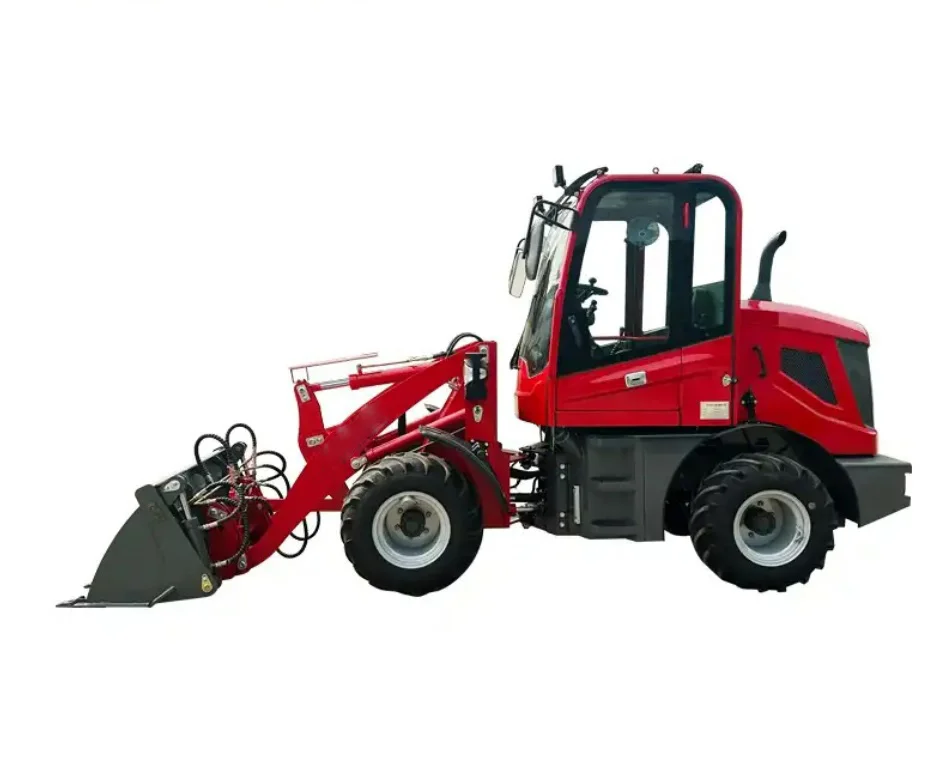Lift Wheel Loader: Understanding the Basics
https://www.cronusgr.com/Lift-Wheel-Loader-Understanding-the-Basics.html
Looking to optimize your construction or agricultural operations? A lift wheel loader might be the missing piece in your equipment lineup. This powerful and versatile machine offers exceptional lifting capacity and efficiency, making it a valuable asset for various tasks. In this comprehensive guide, explore the benefits of using a lift wheel loader, its key features that enhance productivity, and how it can streamline your daily operations. Whether you're handling heavy materials at a construction site or managing bulk loads on a farm, understanding the capabilities of a lift wheel loader is crucial for maximizing efficiency and output.

Understanding the Basics of Wheel Loaders
Definition and Purpose
A lift wheel loader is a type of heavy equipment used in construction and mining industries. It is designed to scoop, lift, and transport materials such as dirt, gravel, sand, or rocks. The primary purpose of a wheel loader is to efficiently move heavy loads from one place to another on job sites.
Wheel loaders are equipped with a large front bucket that can be raised or lowered using hydraulic cylinders. This feature allows them to load materials into trucks or hoppers quickly and with precision. These machines have articulated steering systems that provide excellent maneuverability in tight spaces.
Key Components and Features
The main components of a lift wheel loader include the engine, transmission, hydraulic system, axles, wheels/tires, operator cab, and the front attachment (bucket). These machines are powered by diesel engines for their high torque output required for heavy lifting operations. They also feature advanced hydraulics that enable smooth operation while handling heavy loads.
One key feature of wheel loaders is their ability to change attachments easily. For example:
-
A standard bucket for general material handling
-
Forks for pallet handling
-
Grapples for handling loose materials like logs or scrap metal
Common Applications
Lift wheel loaders are versatile machines commonly used across various industries including construction sites (for loading/unloading materials), mining operations (for moving ore and waste), agricultural settings (for handling feedstock), waste management facilities (for managing recyclables), and forestry applications (for transporting timber).
Telescopic Wheel Loaders for High Reach Tasks
High Reach Tasks
Telescopic wheel loaders are designed to handle high reach construction tasks with ease. Their extendable boom arm allows them to reach heights that traditional lift equipment may struggle to access. Whether it's loading materials onto elevated surfaces or reaching over obstacles, the lift wheel loader excels in applications where vertical and horizontal reach are essential.
The telescopic boom arm also enables these machines to work efficiently in confined spaces, making them versatile for various construction projects. For example, when working on multi-story buildings, a telescopic wheel loader can easily transport materials up several floors without requiring additional equipment or complex maneuvering.
Advantages Over Traditional Equipment
Compared to traditional lift equipment such as forklifts or cranes, telescopic wheel loaders offer distinct advantages. They provide the combined functionality of a wheel loader and a telehandler, eliminating the need for multiple machines on-site. This versatility not only saves space but also streamlines operations by reducing downtime associated with switching between different pieces of equipment.
Moreover, their agility and compact design make them suitable for indoor and outdoor use, enhancing operational efficiency across various job sites. The ability to switch attachments quickly further enhances their utility in diverse tasks such as material handling, lifting pallets, and transporting goods over uneven terrain.
Choosing the Right Wheel Loader Attachments
Types of Attachments
Wheel loaders can be equipped with a variety of attachments to enhance their versatility and functionality. Some common attachments include buckets, forks, grapples, and brooms. Each attachment serves a specific purpose, such as lifting heavy materials, handling pallets, or clearing debris.
Post Comment